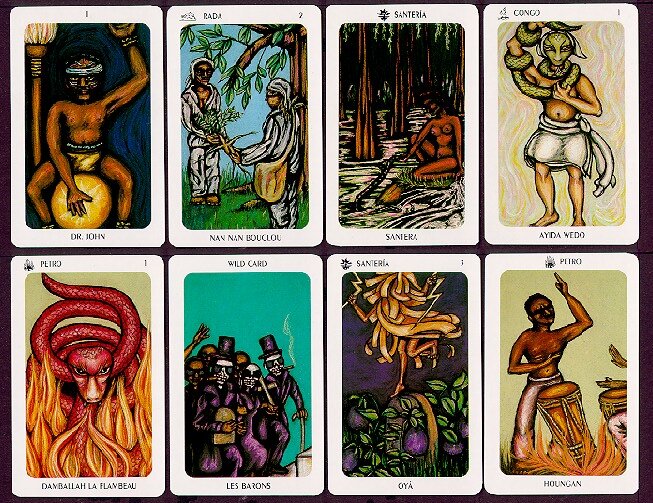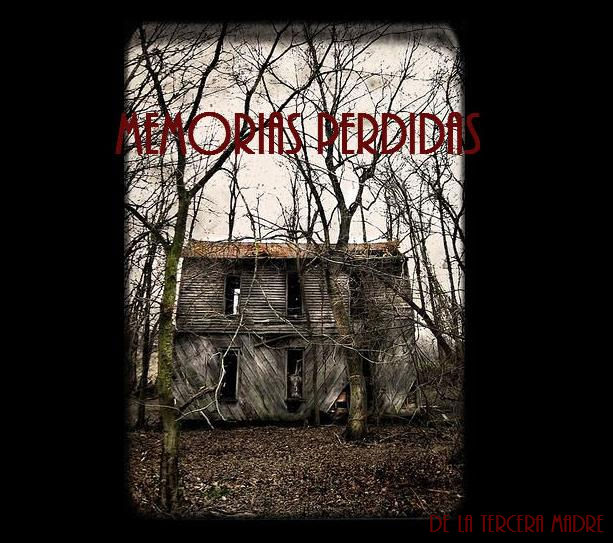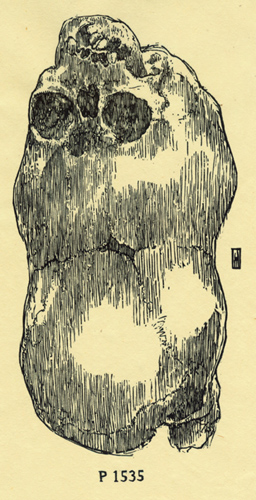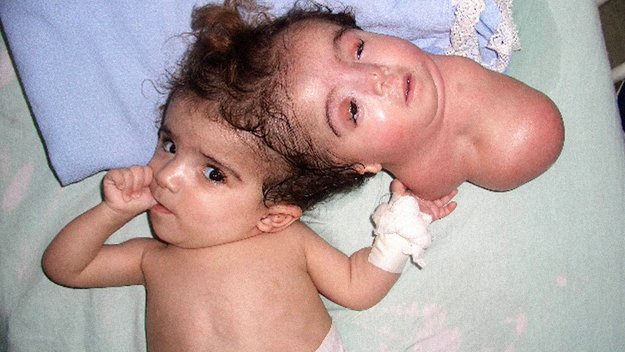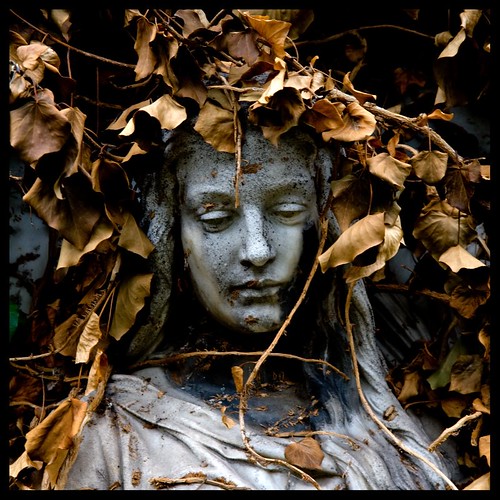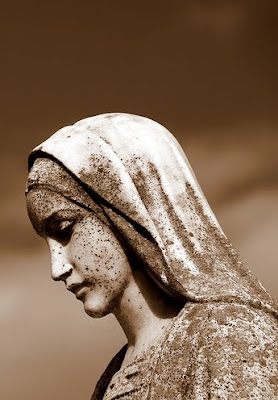
The Voodoo Queen of New Orleans. In all times, in all places, no one has ever risen to the statue or fame in Voodoo as Marie La Veau. Famed in history, infamous in folklore and ever present, even today.
Marie Catherine La Veau was born in New Orleans on September 10, 1801. She was the natural daughter of two free persons of color, both mulattos. She was a free woman of color and a Creole.
She was married to Jacques Paris in 1819 at the St. Louis Cathedral with the famed Père Antoine officiating. She had two children, both of whom appear to have died before reaching maturity. With a few years, her husband apparently also died she began calling herself the Widow Paris, a name that survived onto her tomb. Around the mid 1820’s she began a plaçage with Louis Christophe Dominick Duminy de Glapion with who she bore seven more children. (The plaçage system afforded interracial couples a marriage of conscience, if not legality).
Of these seven children, only two lived to maturity. The only evidence that exist of any sort of occupation she had was a liquor importer (in 1832) on Dauphine Street in the Faubourg Marigny (the warehouse still exits at he intersection of Dauphine and Kerlérec) Streets). By 1842 she appears at the cottage on St. Ann Street where she lived for the rest of her life. This property, and the cottage on, came to her by way of her maternal grandmother, Catherine Henry, a former slave who managed to purchase her own freedom (1795) as well as the St. Ann property (1798).
In the great Yellow Fever epidemics such as that of 1853 she was said to have worked tirelessly as a nurse and femme traiteur (spiritual healer). By 1857 a shoemaker on the corner of St. Ann and Burgundy Streets listed Madame Paris née Laveau as his best customer. It was also around that time that the only record of a “Marie Laveau” appears in documents that associates her with Voodoo. Folklore and later newspaper accounts, however, confirm that she was the Voodoo Queen of New Orleans for at least 40 years from the 1820’s to the 1860’s.
As she withdrew with age by the 1870’s it was alleged her daughter, called Marie Laveau II, succeeded her.
 Very late in life newspapers found her in her home on St. Ann Street and began to celebrate and exploit her as he leader of the mysterious and sensational Voodoos. Protected now by her youngest daughter, she was to have abandoned Voodoo and devoted herself exclusively to the Catholic Church.
Very late in life newspapers found her in her home on St. Ann Street and began to celebrate and exploit her as he leader of the mysterious and sensational Voodoos. Protected now by her youngest daughter, she was to have abandoned Voodoo and devoted herself exclusively to the Catholic Church.She died on June 15, 1881. Newspapers published competing obituaries, some saying she was a saint, others a witch. She was buried in the middle vault of her family tomb in St. Louis Cemetery #1. Today, a year round pilgrimage makes its way to her tomb, some to call her undying spiritual powers, some in simple reverence and many more in respectful curiosity of this unique woman.

Folklore tells us she was exceptionally beautiful, that she got rich selling gris-gris, that she could intimidate he police and that world leaders sought her advice. The stories tell of how she danced with a snake and presided over blood drenched rituals.
Traditions claim she was well known at the “quadroon balls” that she used blackmail, that she was a hairdresser and domestic informant, that she ran a house of prostitution, that she could “fix” court cases and cheat the executioner, that Voodoo powers caused she deaths of at least one Governor and one Lieutenant Governor and that she, herself, never really died.
Basically, she got the credit, and the blame, for almost every unexplained major event. Her spirit still gets such credits and every real, or would be, Voodoo Queen since has claimed her anointment.
In recent times her folklore has and history have been expropriated to reshape her as an abolitionist, a feminist, a spiritualist, a revolutionary, an activist and an icon of many new causes.
What little evidence that actually exist about her life, the larger body of knowledge about the lives and culture of Creole free persons of color in New Orleans mixed with scraps about Marie Laveau that do have gives us a extra insight into her life. She was born the product of a brief plaçage arrangement and was probably raised by her mother and possibly her grandmother. She spent most of her adult life in a plaçage relationship, which was very typical of Creole free women of color of her era. She was Catholic. In fact, reports seem to indicate that most observant Catholics in New Orleans were usually the free women of color.
 She managed an extended family taking in grandchildren, nieces and nephews and perhaps orphans. She was probably a practical nurse, or femme traiteur. Her daughters each continued in the plaçage system. She was remembered as well for her humanity and charity as much as anything. She owned slaves. She was apparently able to support both her father and her plaçage partner at times when they were financially distressed.
She managed an extended family taking in grandchildren, nieces and nephews and perhaps orphans. She was probably a practical nurse, or femme traiteur. Her daughters each continued in the plaçage system. She was remembered as well for her humanity and charity as much as anything. She owned slaves. She was apparently able to support both her father and her plaçage partner at times when they were financially distressed.
She never went to school, or learned to read or write, or to sign her name. She spoke French. She lived in a Creole world, a tri-part caste system that afforded her a unique and respected status as a free person of color. Americans, black or white, were a foreign race. She was a social and political liberal and humanist with desire to heal, to sooth, to nurture and to do good works. Not her father, but her grandfather, was white and he was not a member of the Louisiana Legislature but had been a member of the old Spanish Cabildo and at one time was appointed acting Mayor of New Orleans.
She grew up in a world where Voodoo was neither alien nor uncommon in day to day life. In all probability she learned it from a relative, perhaps her mother, a grandmother, or a mentor. She was a very spiritual person who blended, in the Creole way, Voodoo with Catholicism, especially the saints. Her gris-gris, like the sacred and blessed symbols and objects of the church, were meant to call upon the saints and spirits for their help and to carry their blessings forward. Voodoo was an extension of Catholic practices and Catholicism a focus toward the same Bon Dieu (God), natural and familiar, to Voodoo. She was the African mother, the Creole wife and the true daughter of New Orleans.
Today, it is not in the least unusual to hear from people who attribute both favors and miracles to her intercession. Not unlike the Saints, her spirit still listens and blesses with humanity, justice and love. In all Voodoo, in all places, in all times, she is the Queen.
Information and images from the New Orleans Historic Voodoo Museum
Here is a first-hand account of a voodoo ritual performed by Le Veau:
"Upon a throne of living reptiles, Mare le Veau’s amber-skinned body, arrayed in a short skirt of fig leaves, swayed like the hanging reptiles draping her make-shift throne. Her arms were limp and gently swaying. Her dainty feet rested upon the back of a huge alligator with mouth propped open and suffering the tortures of Hades.
With head bent back Marie le Veau gazed, her large brown eyes just beyond the striking reptiles, whose poisonous fangs came within inches of her enchanting face.
The hour was late. Neither moon or stars were shining. Large gourds cut to resemble grotesque faces cast their pale yellow light upon the thousand or more Negroes gathered before her throne in Congo Square. As they kneeled, bowed and perspired, their weird, mournful chant echoed and re-echoed against the swamp on the west and the river on the east, filling the white citizenry of New Orleans with an uncanny feeling.
Somewhere in the Old French Quarter, a clock tolled the hour of midnight. The Negroes came to their feet in time to see the spirit of Marie le Veau, in the form of a white bird take wing into the distant ocean of darkness for its rendezvous with the great Zombi. Her spirit had barely departed when Marie began to groan in a terrible pain. The Negroes believing an evil spirit was attempting to possess the heart of their queen, waved their arms, jumped and shouted until Marie raised her right hand and the turmoil ceased as if by magic.
Overhead the Negroes, heard a wild rushing noise. Looking up they beheld three great black birds with yellow tipped wings circling madly above their heads, then rising to disappear into the black depth of the night."
From Stories of New Orleans, by Andre Cajun, “Sage of the Bayous” © 1957
